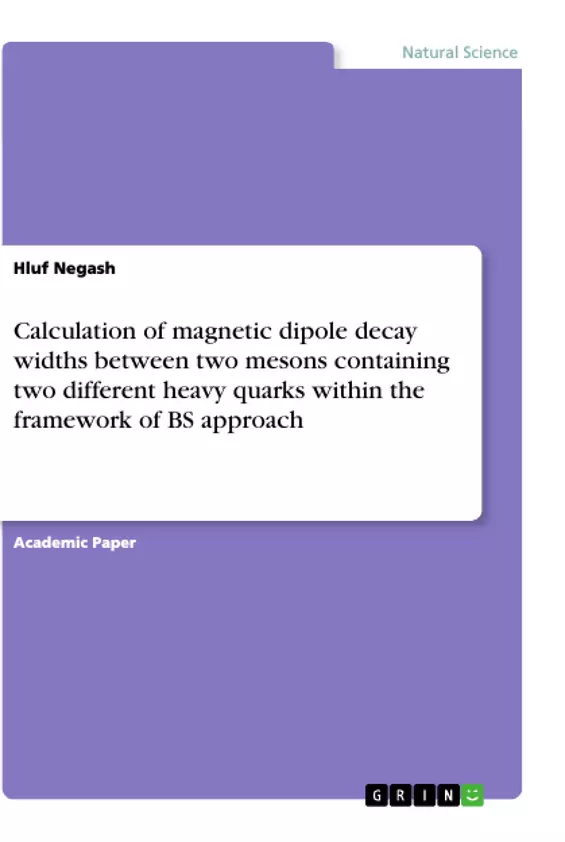In this paper, we calculated the magnetic decay widths between two mesons containing two different heavy quarks ($c\overline{b}$) for the process of $B^{*}_{c}\rightarrow B_{c}+\gamma$, within the framework of Bethe-Salpeter approach. The calculated values are found to be in a reasonable agreement with other theoretical results.
Inhaltsverzeichnis (Table of Contents)
- Introduction
- Calculation of decay widths between two mesons
- Conclusion
Zielsetzung und Themenschwerpunkte (Objectives and Key Themes)
This paper aims to calculate the magnetic decay widths between two mesons containing two different heavy quarks (cb) for the process of B* → Bc+y, within the framework of the Bethe-Salpeter approach. The study aims to contribute to the understanding of bound states of heavy quark and anti-quark systems and the non-perturbative regime of QCD.
- Bethe-Salpeter equation (BSE) for relativistic bound state problems
- Calculation of magnetic decay widths for B* → Bc + γ
- Application of the BSE-CIA framework to heavy meson decay transitions
- Comparison of theoretical results with experimental data
- Exploration of the inter-quark forces and decay mechanisms in heavy meson decays
Zusammenfassung der Kapitel (Chapter Summaries)
- Introduction: This section provides background on the study of heavy mesons and the importance of understanding their mass spectrum and decay transitions. It introduces the Bethe-Salpeter equation (BSE) as a successful approach for dealing with relativistic bound state problems in QCD and highlights the significance of heavy meson decays for investigating the nature of inter-quark forces and decay mechanisms. It also outlines the previous work done by the authors using the BSE framework to calculate mass spectra and transition amplitudes for various processes involving heavy mesons.
- Calculation of decay widths between two mesons: This section presents the mathematical expressions and numerical calculation of the magnetic dipole decay widths for the process B* → Bc+y. It explains the Feynman diagrams involved in the transition process, defines the relevant momentum relations, and derives the expression for the transition amplitude in terms of the Bethe-Salpeter wave functions.
Schlüsselwörter (Keywords)
The main keywords and focus topics of this work include: Bethe-Salpeter equation, heavy mesons, magnetic dipole decay widths, B* → Bc + γ transition, relativistic bound states, non-perturbative QCD, inter-quark forces, decay mechanisms, BSE-CIA framework, heavy quark and anti-quark systems, transition amplitudes, wave functions, theoretical calculations, experimental results.
- Quote paper
- Hluf Negash (Author), 2020, Calculation of magnetic dipole decay widths between two mesons containing two different heavy quarks within the framework of BS approach, Munich, GRIN Verlag, https://www.hausarbeiten.de/document/537060


